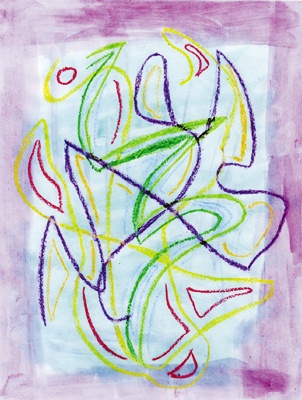All Nonfiction
- Bullying
- Books
- Academic
- Author Interviews
- Celebrity interviews
- College Articles
- College Essays
- Educator of the Year
- Heroes
- Interviews
- Memoir
- Personal Experience
- Sports
- Travel & Culture
All Opinions
- Bullying
- Current Events / Politics
- Discrimination
- Drugs / Alcohol / Smoking
- Entertainment / Celebrities
- Environment
- Love / Relationships
- Movies / Music / TV
- Pop Culture / Trends
- School / College
- Social Issues / Civics
- Spirituality / Religion
- Sports / Hobbies
All Hot Topics
- Bullying
- Community Service
- Environment
- Health
- Letters to the Editor
- Pride & Prejudice
- What Matters
- Back
Summer Guide
- Program Links
- Program Reviews
- Back
College Guide
- College Links
- College Reviews
- College Essays
- College Articles
- Back
Coloring Outside the Lines
The article “Coloring Outside the Lines” by Zoe Ziff shines light on a common problem in urban civilizations today. Graffiti is constantly looked upon as vandalism and is illegal in many places around the world, such as in the United States. However, Zoe Ziff shows that this street art is beneficial to society. She shows that graffiti helps the economy by drawing more people to shop at colorfully painted stores. It also helps children and adults express themselves to others around them. Zoe Ziff urges that the United States should follow the example of Bogota, Colombia and legalize graffiti. I agree with Zoe that in some cases, graffiti can benefit communities.
As a city dweller, I commonly see graffiti on the walls of subway stations and on buildings. My eyes used to glance over these forms of art, ignoring the possible beauty. However, after reading this article, I can see that graffiti is neither harmful nor glorifies bad behavior. It can actually be gentle and stunning, and I now pay attention to the drawings around the city. As stated by Zoe, these art pieces should be respected by everyone. People should be allowed free speech through their artwork, as long as the images were not drawn without permission from an owner. If graffiti was legalized and not treated as horrifying work that needs to be frowned upon, more people would be happy and content.
However, not all graffiti is right for the community. Some forms of graffiti can be insulting to certain people, since it can offend certain ethnicities or races. Furthermore, the graffiti can become vandalism if the art was drawn onto a surface without the permission of the owner. Finally, graffiti can be seen as a rebellious action by the general public.
Legalizing graffiti and allowing this action to spread throughout cities does not seem to be a correct action. However, oppressing this art will prevent free speech, so it is wrong as well. People can reach a compromise between these two ideas and make the world a much more artistic, beautiful place.

Similar Articles
JOIN THE DISCUSSION
This article has 0 comments.
